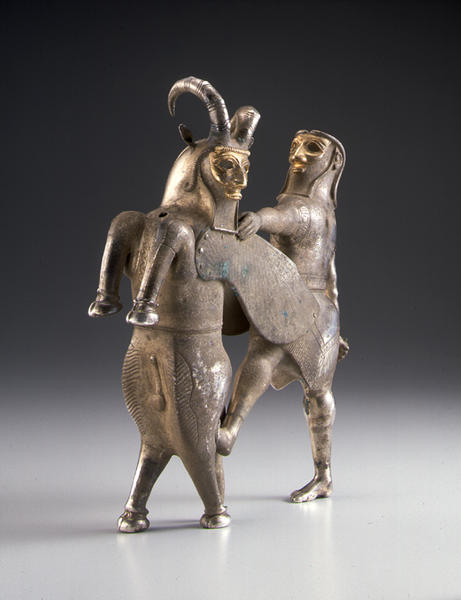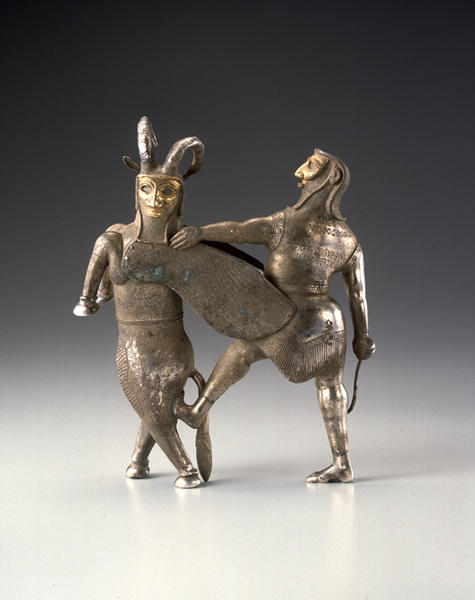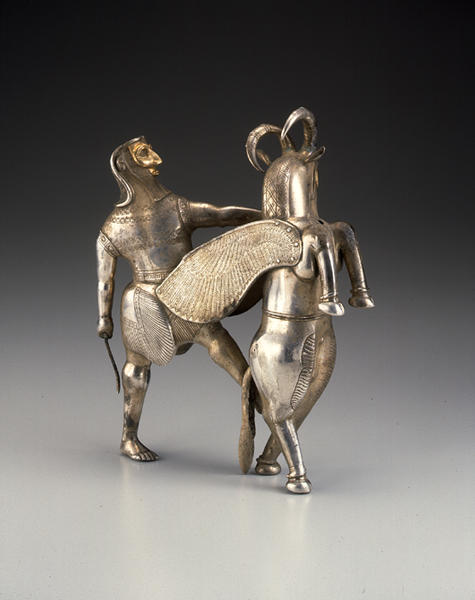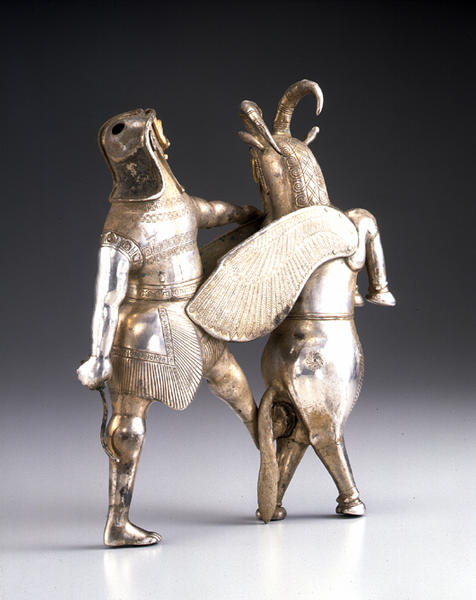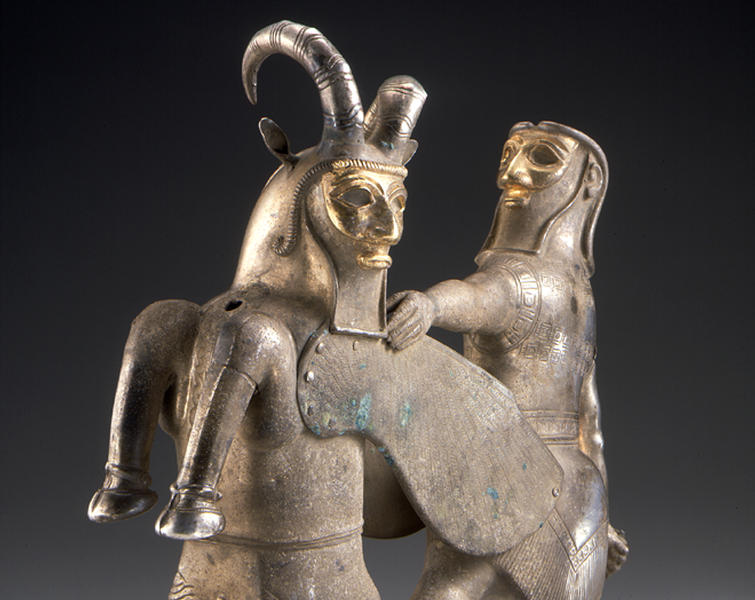Vessel in the shape of a Hero and a Winged Bull
- Pre-Achaemenid Period
- 8th-6th centuries BC
- 8-7cB.C.
- Silver, gold
- H-27.5 W-22.2
Catalogue Entry
The hero holds a sword in his right hand and grasps the left wing of the bull with his left hand, with his left foot pressing against the left rump of the bull, while his right foot is firmly planted into the ground. The rather short back side of his coat has long tufts around the hem of the tail. The coat is buttoned in front and hangs down to the knee in back. Decorative bands of design a chain of small squares with circles inside encircle the cuff, collar, chest, waist, and hem of the coat. Similar types of clothing and decoration are also found in Eastern Anatolia, Mesopotamia, and Western Iran in the beginning of the 1st millennium B.C. The man's face, or more precisely, his mouth and portions above it, is covered with gold. That the eye-sockets are disproportionately large for the size of the man's face suggests that some type of inlay work was present originally, judging from grooves incised along the eyebrows arcing over the eye-sockets. The long depression on the face from the temple to below the nose and reaching the chin also raises a possibility that it was once covered with a beard made of another material. The man's face resonates with those found on ivory carvings excavated in Hasanlu.*1 A hole at the top of the head and a wide channel cut from above the man's forehead to the back of the head probably signify that other materials were fitted in those areas for a head ornament and hair. The frame-like element on the forehead is separated in the center and appears to curve up, suggesting that bull's horns were attached to the crown the man wore.
The winged bull has a human face, fashioned similarly to the man's, including the beard. The horns on the bull's head are those of the caprid. The wings are composed of three layers of sword-shaped feathers with herringbone pattern. Around a circular hole in the chest, there appears a trace suggesting something once attached. The tufts on the forehead, covering the temple, tucking behind the ears, and allowing them to hang down from the sides, then curing ends behind are almost common feature of griffins, also winged or unwinged half-human, half-animal supernatural beasts of eastern Mediterranean area, Eastern Anatolia, and Northern and Western Iran. Designs involving the winged caprid are quite common in the Iranian highlands: the winged and human-faced divine animal with caprid's horns can be found in metal works of Luristan in Western Iran during 10th to 9th centuries B.C., and later, human-faced winged bull with caprid's horns can be found in Achaemenid art.*2
The contest scene of a hero a sword in his right hand, holding onto an animal or a supernatural beast from behind and with the left foot pressing down on the animal's body resemble those found on cylinder seals of Babylonia in the early 1st millennium B.C.*3 The existence of an active trade route connecting Kassite-Babylonia, Assyria, Hasanlu in Western Iran and Marlik of Northern Iran has been speculated, which corroborates clear similarities in art and craft designs in these areas.*4 Incorporating the appropriate Western Iranian imagery of the day, the aforementioned contest scene from Babylonia quite possibly provided a theme to the present work.
The two figures in this piece are connected at the left foot of the hero. A variety of evidence, including the hole in the hero's head and the hole in the chest of the winged bull, point to a possible use of this work as a vessel.
